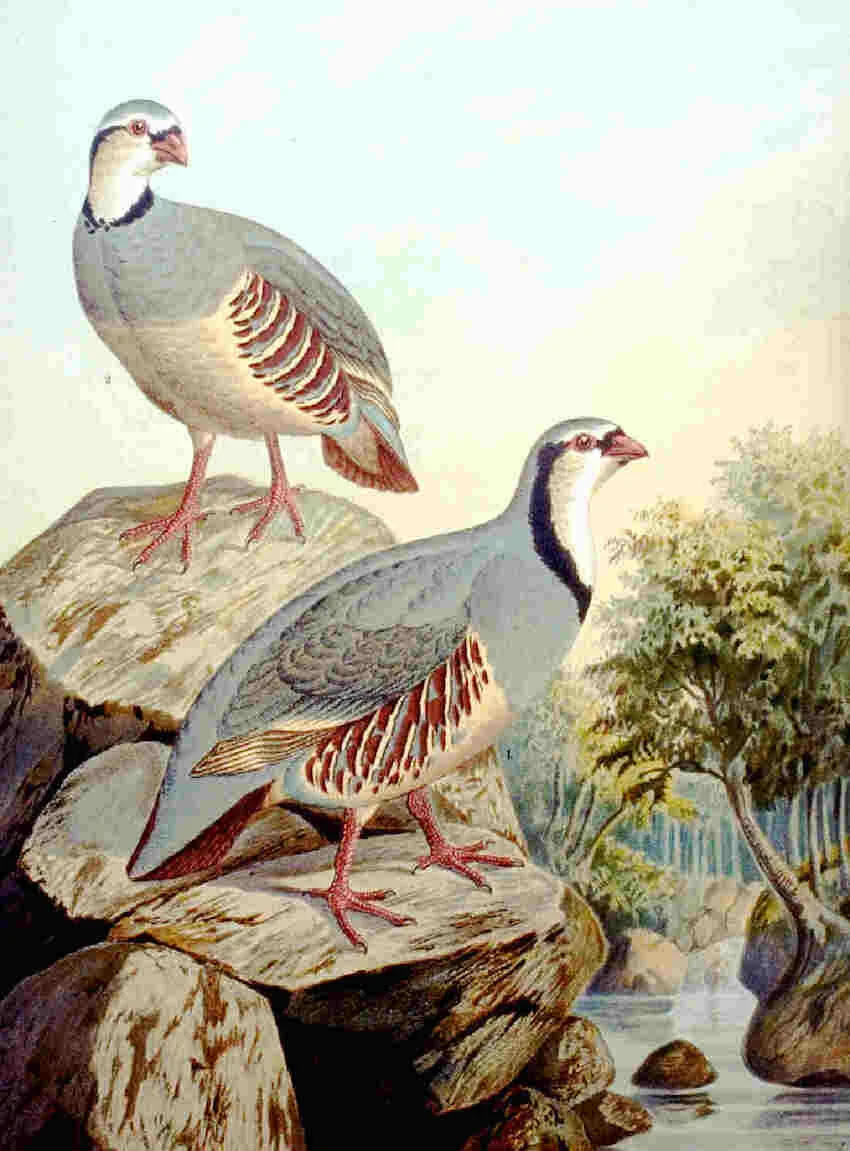ROCK PARTRIDGE (Alectoris graeca) Perdrix bartavelle
Summary
A not so common bird of the mountains where it inhabits sunny slopes rich with boulders, rocky outcrops and loose scree below cliffs. Very hard to spot due to its cryptic colouration, it is often first detected from its staccato stridulating call:
Rock Partridge range: http://datazone.birdlife.org/species/factsheet/rock-partridge-alectoris-graeca
Despite its size (500-800g), the Rock Partridge is really difficult to find in its favoured rocky habitat. Its colouration blends perfectly with the boulder-strewn slopes it lives on, and it is a shy bird which runs and hides itself amongst the numerous holes and crevices available to it. The Swiss alps form the northern boundary of its range (see map), and although mostly sedentary, it does makes altitudinal movements especially in a harsh winter, to which it seems poorly adapted (Knause etal 2018). It is normally found above 1700m and seldom higher than 2600m, hence it does not go above the vegetation line as it depends upon plant shoots, seeds and berries for its diet.
Alectoris graeca Richard Bartz, Munich
Despite being hard to see, its calls carry some distance, although it can be tough for humans to hear in an environment of torrent streams and frequent strong winds! It’s main calls are variations on a theme of very harsh, sharp, clucking sounds:
As you can hear the “clucks” are not equally spaced but are delivered with a somewhat irregular, almost syncopated rhythm which, in itself, is quite characteristic. It also throws in a few very short notes in between those which make up the main voice, I have marked these with blue arrows in the video below:
The short notes are very brief, almost like a sucking sound and last barely 0.02 secs. You can see them in the photo below at 14.4 and 14.5 secs where they seem like a V shape:
Although very short, these brief notes actually form an important part of longer calls which may be as near to a “song” that these birds can get, as they seem to accelerate and amplify the ending of the phrases. Picture yourself at 1800m on a steep slope, amongst alpine rocks, it is late May still with snow slightly higher up and torrent streams of meltwater all around you, alpine pastures below (but it is too early for the cows to be this high), Chaffinches sing in the low trees and scrubby bushes around, and the Cuckoos have arrived looking for Water Pipit nests:
At the end of that last example the acceleration runs into a rapid “churring” or “crowing” sound, this may be part of the male display exerting his authority over territory, or his mate, since they are usually monogamous and form long-term pair bonds (Cramp etal ‘77-94). The result can be seen in the spectrogram below at the end starting at 10 seconds:







